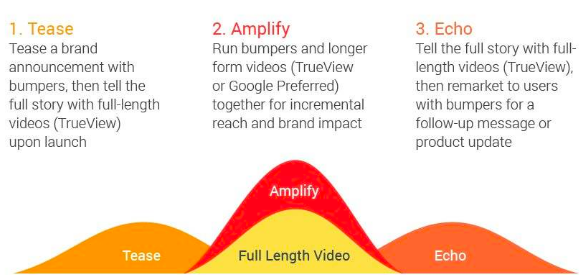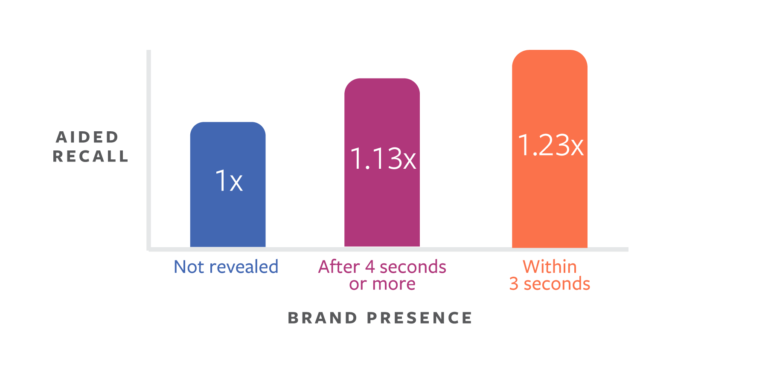Online advertising has come a long way since its inception.
Given that search accounts for only 21 percent of active users’ time on the internet, it comes as no surprise that businesses everywhere are using video advertising as an avenue to connect with their target audience. In fact, according to a Renderforest survey, marketers who use video content to promote their brand receive more web-traffic, generate more leads, and close more sales than their counterparts.
However, creating an engaging, conversion-friendly video campaign is not everyone’s cup of tea.
Previously, we discussed the importance of creating a video-inclusive advertising strategy for your brand. In today’s post, let’s go over a few ways in which you can make video work in your favor:
Choose the right video ad format:
In order to best deliver your video content to your target audience, it’s important to understand which format is the most suitable for your marketing campaign. Every video ad format engages with the users differently and depending on your business goals, and ROI expectations, you can choose from the following:
- In-stream ads run before the video that your viewer has selected (on YouTube, or other streaming platforms) to watch. They can be played anywhere in the Google Display Network (or partner platforms in the Google video ad space) and can be skipped after 5 seconds.
As a brand, you can use in-stream ads to customize your video campaigns using different overlay text and CTAs. Consider the following skippable in-stream ad from Grammarly, as a reference:
 In-stream ads charge the advertiser only when the video is viewed for at least 30 seconds, or if the viewer clicks on a CTA.
In-stream ads charge the advertiser only when the video is viewed for at least 30 seconds, or if the viewer clicks on a CTA. - Pre-roll ads are between15 to 20 seconds in duration and can play before, mid-roll, or after the video that someone’s watching. Since these ads can’t be skipped, remember to include actionable CTAs in your video to benefit from the viewer’s attention.
For example, you can encourage people to click on your pre-roll video ads to receive something special in return. If you’re gearing up for a new product launch, you can use the pre-roll ads to get sign-ups in exchange for a free demo.

Remember, pre-roll video space is usually available on a pay-per-click (PPC) basis, which means you’re charged every time a viewer clicks on your ads. Make the click worth their time and yours. - Bumper ads (:06, non-skip) are mobile-friendly, bite-size pieces of content that work well for people “on-the-go”. With only up to 6 seconds to get your point across, brands are expected to consider narrowing their marketing message to a single focus.
When paired with longer-form creatives, bumper ads can be used for teasing, amplifying and/or echoing the main narrative. Based on the data from 18 different advertisers and 400 advertising campaigns, Google found that bumper ads increase “the unique reach of TrueView campaigns by 78% on average”.
Source: thinkwithgoogle
Draw attention from the get-go:
A research from 2015 shows that the average attention span is currently down to 8 seconds and is expected to decline even further. Last year, Facebook Business also released a report showcasing how long people watch a video ad before pulling out their phone, scrolling ahead or closing the app/browser.

Source: Facebook Business
Turns out, regardless of the type of video ad you’re running, the average number of viewers drops off exponentially very early on.
As a result, if you want people to connect with your ads, and learn more about your brand, you must get your message out as soon as possible. People are more likely to click away from content that’s taking too long to deliver the goods—all the more reason to start strong and get everyone’s attention from the get-go. Facebook also recommends standalone video ads (that appear in the newsfeeds) to be 15 seconds or shorter to achieve higher completion metrics across the board. On the other hand, in-stream video ads can be between 5-15 seconds for optimal results.
With the trend of creating shorter video ads slowly catching up, marketers everywhere have a new problem to solve now: How do you promote your brand in such a short amount of time? In a meta-analysis of video marketing data, Facebook discovered that customers are 23 percent more likely to remember a brand if it was featured in the first three seconds of a video ad.

Source: falcon.io
In short, if one of your goals is brand awareness, you have exactly three to four seconds to establish a visual identity.
The following ad from Hefty Party Cups in a great example of how you can create a video that draws people in from the first frame.
Not only is the ad short, crisp, and entertaining, but, also opens (and closes!) with Hefty’s logo. In 6 seconds, they’re able to draw parallels between their brand and ‘people having a good time’—a marketing message that’s both clever and persuasive.
Use storytelling to establish a compelling emotional narrative:
In today’s cluttered advertising landscape, companies are increasingly relying on storytelling to communicate the entire character of their brand to their target demographic. Stories are great for marketing, simply because they hold the power to elicit emotions that can influence who we trust. By playing on collective nostalgia, and helping people discern complex information, stories provide a clever and persuasive medium for your audience to notice, remember, share, and purchase your products.
Think about it: Companies like Cisco and GE don’t try to sell you technology—instead, they show you why exactly they’re excited about the overarching theme of innovation. Similarly, Red Bull focuses more on selling a lifestyle that celebrates competitiveness and the spirit of extreme sport, instead of simply asking you to buy their energy drink. Brands, both B2C and B2B, prefer to tell stories that make you laugh or tug at your heartstrings to attract potential (especially, top-of-the-funnel) customers.
The biggest lesson here is that the story should be less about you and more about what you (and/or your products) can do for others. For example, if you’re a company that sells solar panel software, your narrative can be about saving the earth or fighting climate change. If you’re in the telecommunications business, then treat your viewers to a story about building connections and real people.
In their tear-jerking campaign (that’s doesn’t encourage people to buy airline tickets!), WestJet showcases their commitment to reuniting families and friends across the globe during the holiday season because ‘Christmas should be spent around those you love’. You’re gradually introduced to an elderly couple (amongst others!) missing their daughter who’s moved away. As the husband-wife duo recount stories about her, she appears in the background to surprise them resulting in a joyous homecoming.
According to Hubspot, tapping into the right emotion is crucial to effective video storytelling, especially when every emotion triggers a specific action. For example, “happiness leads to sharing, sadness leads to giving, fear leads to loyalty and anger leads to virality”. Therefore, when you’re working on your next video campaign, ask yourself the following question: How do I want my viewers to feel after watching my video story? Then, create an emotional undertone that will persuade viewers to follow through on your call-to-action.
With ever-changing social trends and saturated environment, it seems more difficult than ever for a business to create compelling video ads. So, how can your company thrive and get results with social advertising? In short, remember to provide a solution to a common pain point, entertain the viewer, evoke emotions and educate your audience.
With new options for video monetization being released and more opportunities to place video ads on Instagram and the Audience Network, marketers can now look beyond Youtube when it comes to promoting their ads.
The icing on the cake? There are even more advertising formats around the corner for video, with augmented reality ads in development.
All in all, a good time to invest in video!